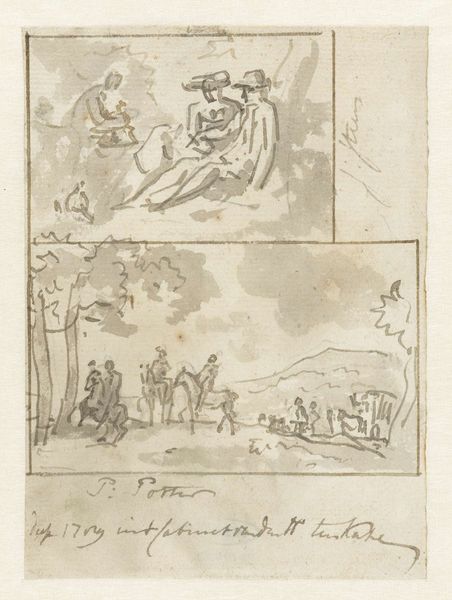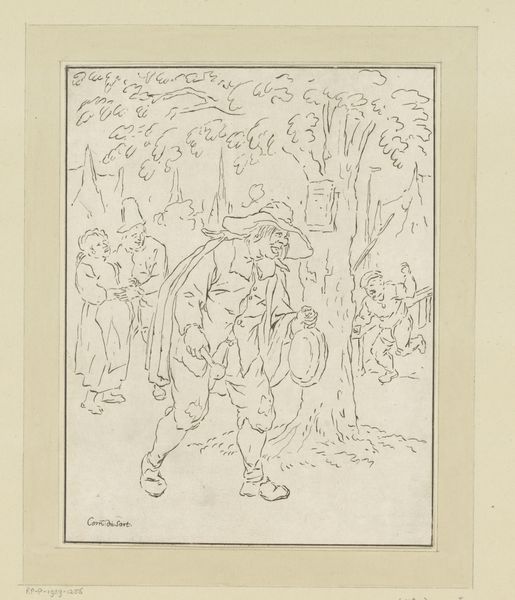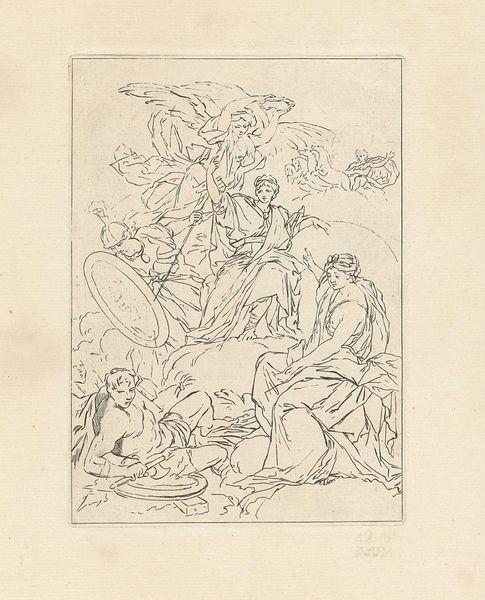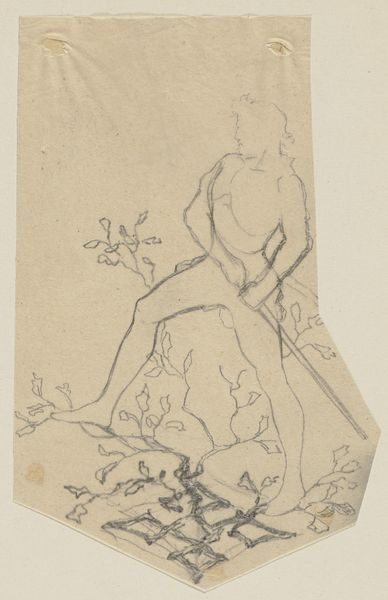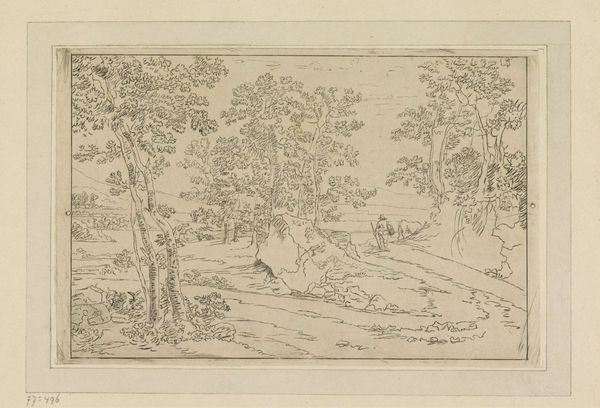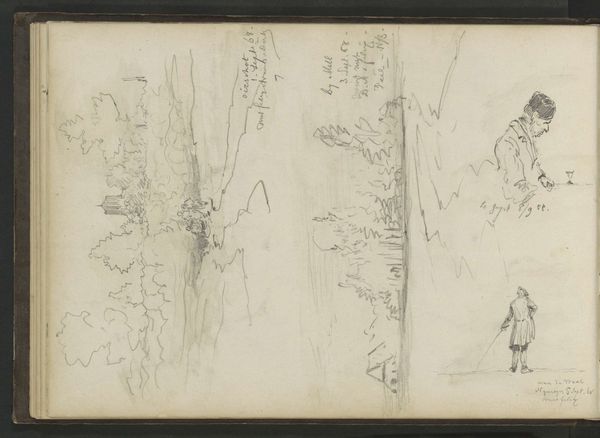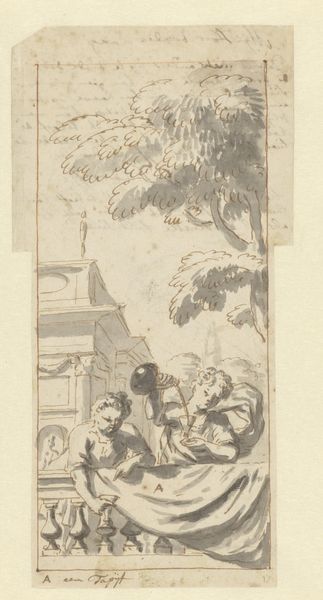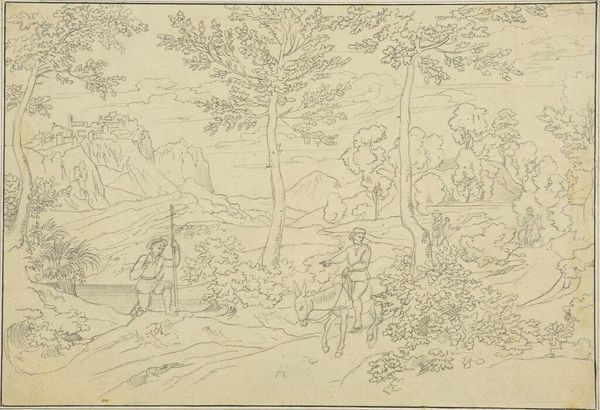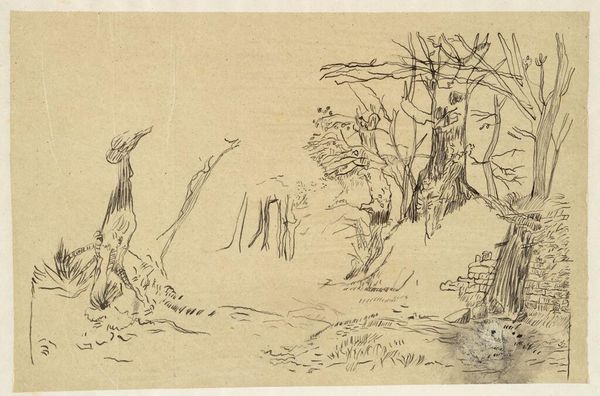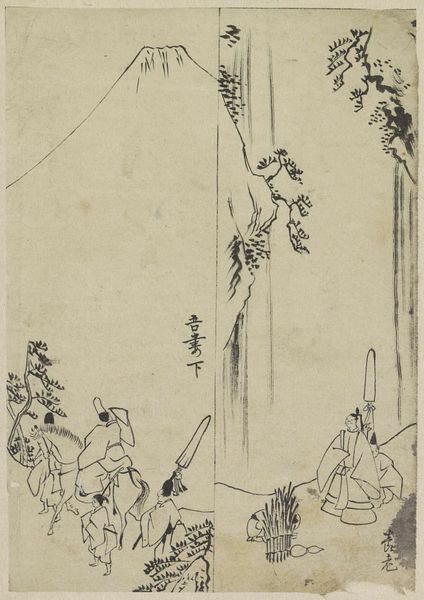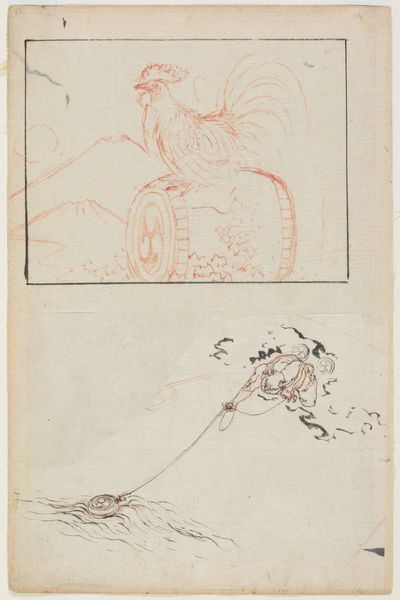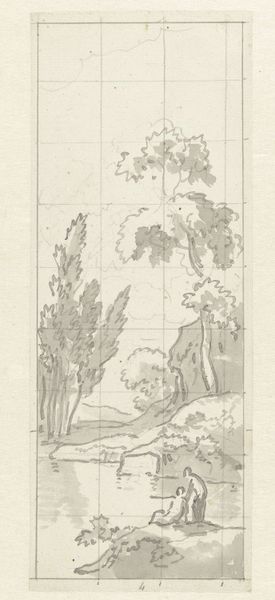
Ontwerp voor een zaalstuk: twee bladen met elk twee voorstellingen van beelden met vrouwen en kinderen 1715 - 1798
0:00
0:00
drawing, paper, ink
#
drawing
#
baroque
#
figuration
#
paper
#
ink
#
line
#
genre-painting
Dimensions: height 160 mm, width 208 mm, height 161 mm
Copyright: Rijks Museum: Open Domain
Editor: So, this drawing, "Ontwerp voor een zaalstuk: twee bladen met elk twee voorstellingen van beelden met vrouwen en kinderen" - quite a mouthful - dates back to between 1715 and 1798 and is attributed to Dionys van Nijmegen. It’s done with ink on paper, and what strikes me is how airy and light the compositions feel, despite the rather classical subject matter. What do you make of it? Curator: Airy is a wonderful way to put it. It dances on the page, doesn’t it? I am reminded a bit of daydreaming. Van Nijmegen clearly draws inspiration from the Baroque, with its dramatic flair and figuration. The interesting thing for me is less what it *is*, than what it is *becoming*. Given its designation as 'ontwerp' or design, this isn't a finished piece, right? We're seeing the birth of an idea, not its fully formed self, wouldn't you agree? It makes one want to sneak into the artist’s workshop and rummage around. Editor: Absolutely! I didn’t think about that transition of forms… Curator: Notice the dynamic interplay between the figures. It is as though they're sharing secrets! Look at the composition, women with children recurring across all four panels. Now I wonder about that repeated statue…it anchors each scene and asks interesting questions, doesn’t it? Are these glimpses into a single story or four separate worlds, united only by our artist's ink? I suppose both could be true at once, like memories floating. Editor: I hadn’t considered that either – the cyclical element of the statues bringing unity to each sketch. Thanks for pointing that out. Curator: It makes me curious about our own role as viewers. Are we deciphering, witnessing, or even interrupting something private? Perhaps a little of all three. These works offer gentle lessons about observing and really *seeing* what's there and the possibilities too.
Comments
No comments
Be the first to comment and join the conversation on the ultimate creative platform.
